Tutorials
Adobe Media Encoder CS4 (FLV/F4V-H.264-MPEG4)
Adobe Media Encoder CS4 is the compression/encoding application included with Flash Professional CS4; it exports videos to FLV and H.264 (F4V/MPEG4) formats.Tutorial requirements:
- You must have Flash Professional CS4 + Adobe Media Encoder CS4 installed in your system.
- Our compression profiles (you will find the download link in the Tools page).
NOTE: The user interface of the following screen captures may be different than yours, since it depends on the operating system your are using (Windows XP, Vista, Mac OSX, etc).
1) Open the program... and click on "Add" to select the source video file you want to encode.
NOTE: We recommend to use a source video file with the highest possible quality.
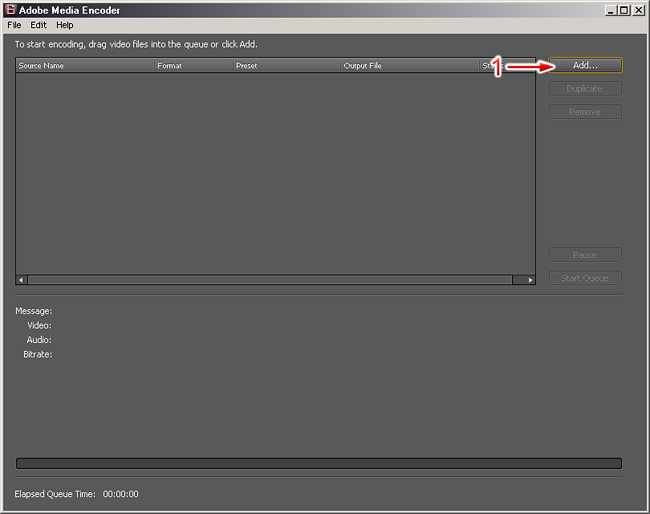
The selected file will be added to the list.
2) In the list, click on the "Presets" arrow button: a drop down menu will appear.
If you have not previously imported one of our profiles, then continue reading from step 3.
If you have previously imported the profile you intend to use, then it will be displayed in the drop down menu with a name starting with "WebTV" (Example: WebTV-F4V-PAL-700Kbps), select it and continue from step 10.
3) Click on the last option "Edit Export Settings": a new window will open.
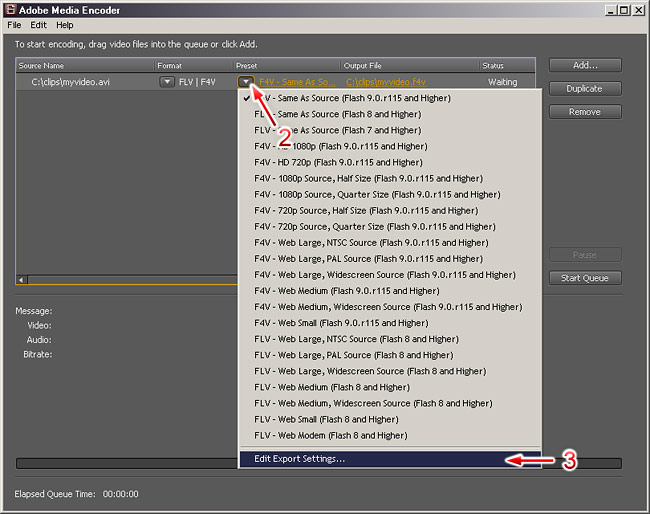
4) In the new window, click on the "Import Preset" button.
5) Select the profile you wish to use and click on "Open".
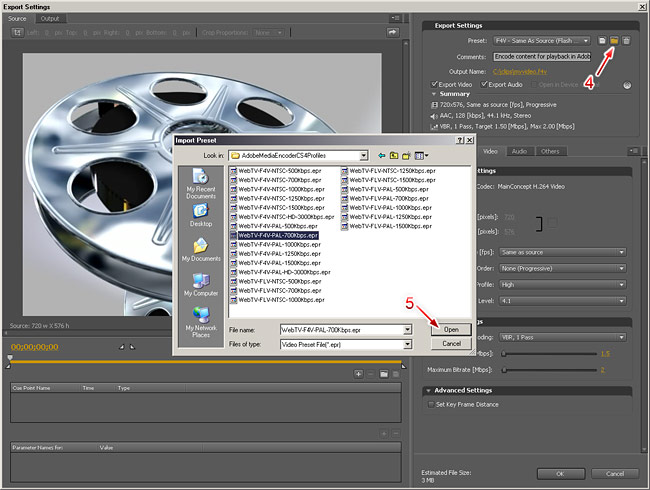
When you import a profile ("Preset") the program will show some options:
6) The name of the profile (leave it like it is).
7) Tick the checkbox "Save Filter Settings"
8) Click on "OK"
Adobe Media Encoder will import the profile into the list of available profiles. From this moment on, every time you want to use this profile you won´t have to import it again.
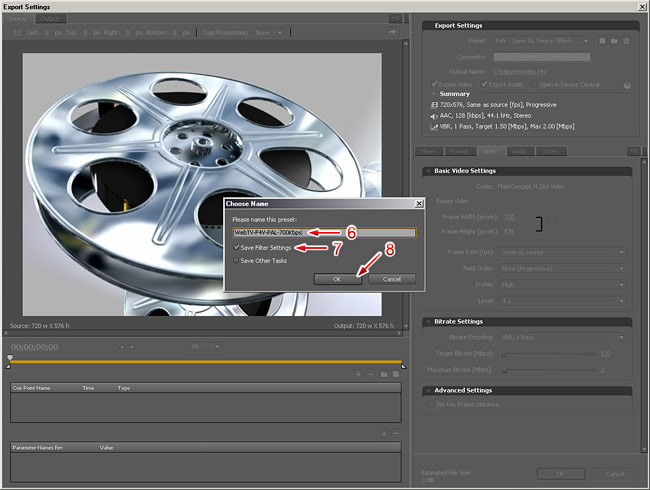
9) Click on "OK", again.
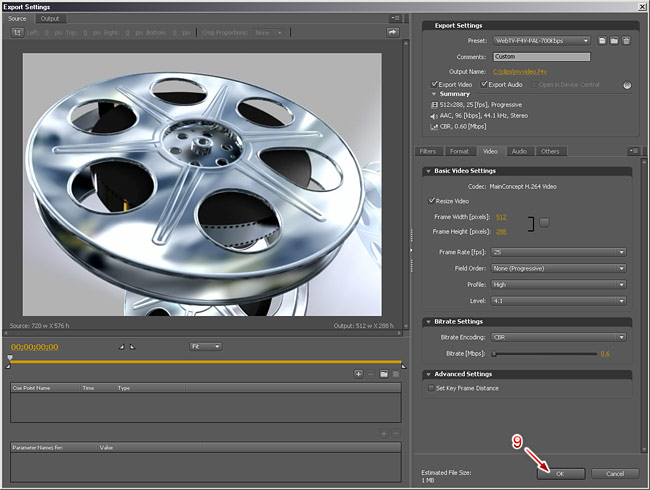
10) In the main window, click on the yellow text "Output File". A new window will open, then select the destination folder and enter a name for the resulting compressed/encoded file.
NOTE: We recommend to include the quality as part of the file name, this way it will be easier to identify it when you are ready to upload it to your WebTV.
If you wish to compress/encode additional files, or the same file in other qualities, then this is the moment to add them to the queue (repeat steps 1 to 10)
11) Then, click on "Start Queue" in order to start the compression process.
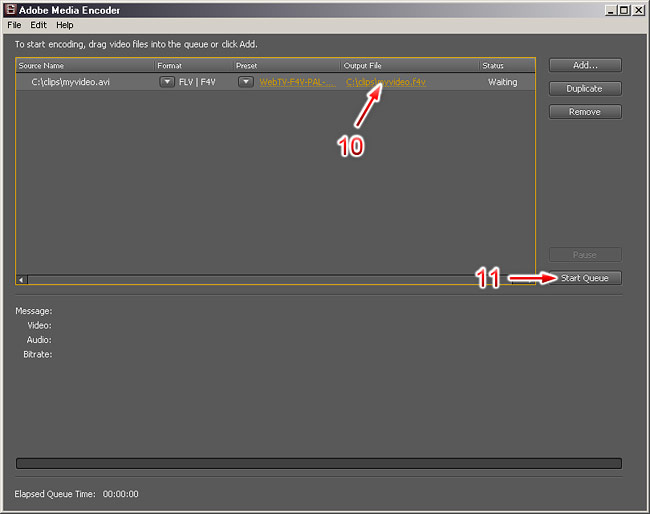
The program will start compressing the video(s) and you will see a progress report at the bottom.
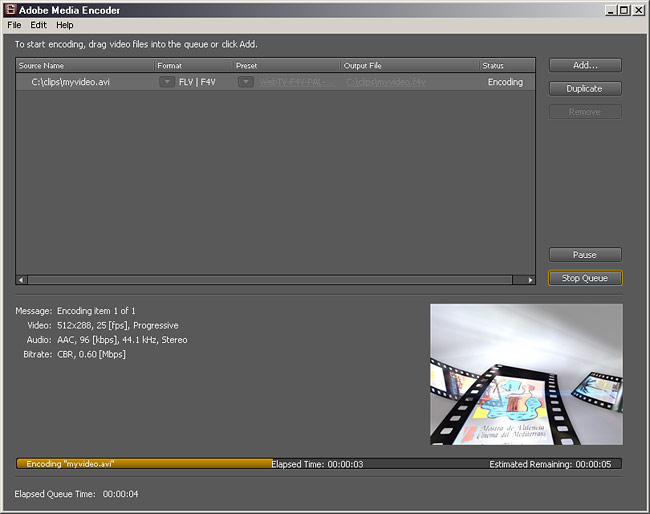
That´s all! You will find the compressed/encoded file(s) inside the folder you specified previously.
Other considerations.
1. Modifying a compression profile. In this tutorial we have used a compression profile to encode a video file. However, it is possible that you require to modify a profile to better suit your WebTV´s qualities. One of the most important thing to keep in mind is the target bitrate, for example, if you plan to encode videos for a bandwidth of XXXKbps, that number must be the result of adding the audio track bitrate and the video track bitrate; if the audio track bitrate is 128Kbps, then the video track bitrate must be XXX - 128.
2. What happens if I upload to the WebTV a video file with a different bitrate (bandwidth) than the one specified for a particular Quality?. Well, the worst thing that could happen is that the automatic bandwidth detection won´t be reliable. Therefore, from a user´s perspective, we recommend to keep the system consistency.
